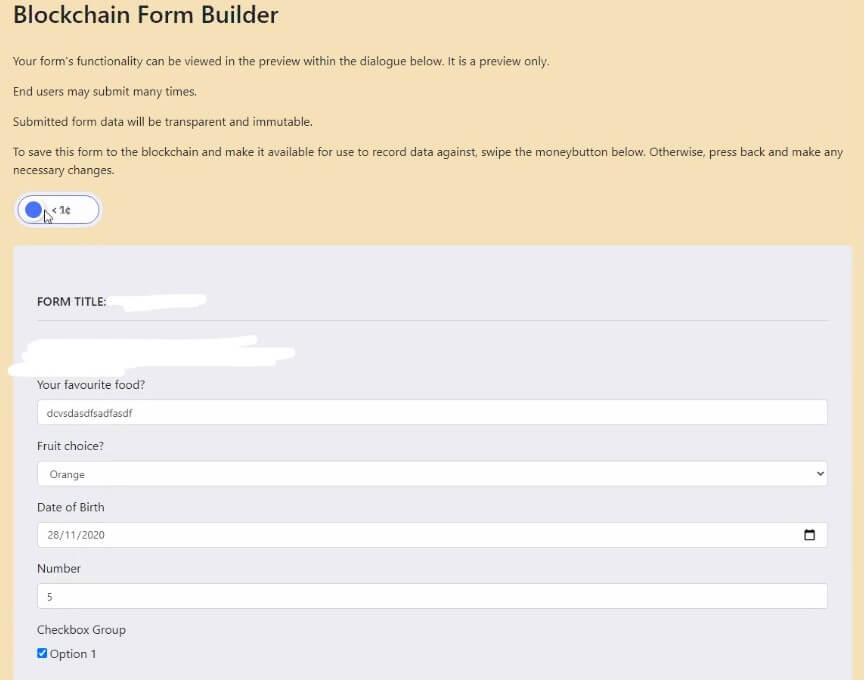There’s one area which is not only a prime candidate to be revolutionised by blockchain, but perhaps could be the most impactful: elections, or rather, voting.
That is the current focus of Eli Afram, a Bitcoin Association Ambassador to Australia and the CTO of LAYER2 Technologies – the company developing B-Vote, a multi-purpose blockchain-based voting platform built using the Bitcoin SV blockchain. Afram sees the blockchain’s immutable data ledger as the perfect vehicle for reliably capturing votes of many kinds; the obvious use case is political elections, but B-Vote could also be used in commercial or even personal contexts – and tailored for each.
‘Voting has been one of the floated use cases of blockchain technology for a long time,’ says Afram.
‘Having worked with the government in the past, it’s an idea that’s always been at the forefront of my mind.’
In theory, it makes a lot of sense: A core proposition of blockchain technology is that it can immutably store data in a way that is very difficult, if not impossible to alter. The ledger is public, so any irregularities (for example, in voting) can be identified by anyone who cares to check.
‘It’s analogous to the large transparent voting bins you might see at an election booth,’ explains Afram.
‘The idea is that all of the ballots are put in a transparent box, so that everyone can see that there were no votes in the box before there should have been, or that none have been added after they should have been. Once you submit your vote, you can physically see with your own eyes that your vote is going to be included. That’s what blockchain voting allows.It doesn’t fix voting, but it takes a step in the right direction in making it better and more transparent.’
But despite the seemingly obvious connection between the security offered by blockchain and the requirements of a comprehensive voting mechanism, no one has yet taken full advantage of it – with existing attempts falling far short of what Afram sees as blockchain voting’s massive potential.
‘There was an ICO done on an Ethereum blockchain for a voting platform, that was advertised like it was a fully-featured blockchain voting system – but it wasn’t live voting; the system took votes after they had been cast and published, then uploaded that data to the blockchain,’ says Afram.
‘If you’re going to upload data after the fact, it defeats the whole purpose. The idea is that you do it live so that the user submits it to the blockchain and therefore the user knows it’s there. If you do it after the fact, then who’s to say you haven’t manipulated the data in transmission?’
Enter B-Vote
Though still in early stages, B-Vote is far enough along that Afram can show off its core functionality.
At the core of the B-vote value proposition is versatility: it has the simplicity of a consumer-oriented platform like SurveyMonkey, while being robust enough on the back-end to support more critical political deployments. With the major benefits brought about by Bitcoin SV underpinning the system – namely the immutability, unbounded scaling, high throughput rates and low transaction costs – leaves the utility of B-Vote wide open: The same technology that supports an election could be used to create, deliver and store basic questionnaires – as well as everything in between. The forms and form responses are stored on the blockchain, but the users might not even notice.

From the point of view of a user building a form, the process will be familiar. The most obvious difference at this point is that the form builder can specify whether the data being saved to the blockchain is encrypted or not. Though represented by a lone tickbox at the bottom of the page, it is a choice which by itself opens the platform up to a wide variety of use cases. A company looking to hold a stakeholder vote on something, for instance, might want the responses and the data collected to be totally transparent and viewable to the public, whereas other applications will necessitate the most rigorous of security.
‘Imagine if you want the shareholders to vote on a given proposal. If the voters know they’re using a transparent system, it builds confidence,’ Afram says.
On the other hand, if B-Vote is being used for something like a public election, it might be preferable to have the data encrypted, only readable by the person casting their vote and the authority in charge of receiving it.
While the B-vote interface already appears to be well-developed, Afram emphasises that the front-end seen by the voter is completely customisable. On the smaller end of the spectrum, B-Vote could be used for something as simple as response collection – think of the basic feedback buttons you often see installed in airports, where passengers are invited to hit red or green buttons to indicate whether or not they are happy with the service they’ve received, which could then be tracked and stored on the blockchain via B-Vote.
For the user
A key part of keeping B-Vote’s multi-purpose capabilities is making sure that Bitcoin is not front and centre. Afram believes that for B-Vote to see wide use – either in elections or as a general-purpose survey tool – users need to be able to create their forms or submit their responses to the blockchain without necessarily knowing they’re doing it – or at the very least, without using a Bitcoin wallet of their own to fund the transaction.
To solve this, B-Vote has partnered with MetaStreme – a scalable Bitcoin wallet that can submit large batches of transactions to the blockchain at once, opening the door for applications like B-Vote to move all blockchain-related processes – like paying a BSV transaction fee to submit to the blockchain – further up the supply chain and away from the end-user.
‘At the moment, if I want to submit a form, there’s a Money Button for me to swipe for a tiny fee which will submit the form to the blockchain – and this is what gets recorded online,’ explains Afram.
‘For people who don’t own Bitcoin or don’t use Bitcoin, we use MetaStreme on the backend. What that does is it allows us to record data onto the blockchain without using a wallet. What ends up happening is instead of a Money Button, you end up having a button at the bottom which says submit, and then MetaStreme submits it to the blockchain without the user knowing that’s what has happened.’
‘That’s how you get adoption – by not expecting people to know or understand what blockchain is. The average user just wants to know that they’ve submitted the form and that their response was collected.’
Of course, if users do want to create a form using Money Button, the Bitcoin SV protocol will mean that the cost of doing so and of collecting the responses will be only a fraction of a cent per transaction.
Encouraging adoption
Convincing a government to upheave the status quo is an ambitious goal – especially in an arena as sensitive and important as an election. It is something which can’t be accomplished without close partnerships with governments. The technology can be as fit-for-purpose as it is possible to get, but a successful election requires the enormous machinery of government – for example, to identify eligible voters and keep a log of those registered to vote – not to mention identification vetting.
Afram has already held talks with local councils in Australia, but with the often-glacial pace that governments affect change, Afram sees private applications of the software as being the best opportunity to demonstrate the effectiveness and safety of the technology, as well as the most realistic path towards eventual larger-scale government adoption.
‘The problem with blockchain voting is that we can’t dictate to governments how they should run their voting processes. All we can do is show them what’s possible – the transparency that’s possible, the capabilities of blockchain technology – and use that to say “we can run an election that would satisfy the population of Australia – we could do 25 million votes in one day”. This is something that we can demonstrate in the private sector,’ says Afram.
‘Governments are not pushed for competition. The private sector has to compete to survive, whereas the public sector gets paid regardless. So for now, let’s look at solutions for businesses and keep the public sector informed.’
‘We’ve already conducted a few tests and proved that it works. If a government entity does approach us, we would tailor the solution to match their system: even within Australia, from council-to-council, the voting process is slightly different – there will be a different number of candidates, a different number of councillors, a different voting structure between the councils – so it’s not like we can just build a one-solution-fits-all.’
Powered by Bitcoin SV
Afram’s ultimate goal for B-Vote – to be a viable piece of election infrastructure – is ambitious, a characteristic it shares with previous, now-failed attempts to achieve it. Where other solutions have agonized – and continue to agonize – over how to deliver such a product in a way that can scale to meet the massive requirements of the elections of even a small country, with Bitcoin SV this barrier has already been overcome.
‘I feel like Bitcoin SV is accomplishing all of these things and keeps proving its capabilites – more so than any competing chains have dreamed of,’ says Afram.
‘We’re not the first and we’re definitely not the only voting platform – but Bitcoin SV is the only blockchain that can deliver a system that works. And that’s been proven, now. We did 10 million transactions in October in bursts here and there. We didn’t need to test the entire population of Australia – there was a short run we had where we pushed to see how much we could store on the blockchain and how quickly. We found that we would be able to cater to Australian’s population in a day.’
Technically speaking, B-Vote is making great strides. The real work begins in trying to convince the target audience that not only can B-Vote administer votes (both political and commercial), but that it can do so in a way that can adapt in both function and scale to meet their unique requirements – something which Afram is quietly confident he can achieve.
‘When we talk to councils and governments, we’re getting the “wow” response, which is a good step because we are getting that visibility – which is half the battle. We’ve proven that the throughput can handle it, the technology and transparency of it all is there. It’s ready to go – we just need to work with the right government to implement it.’
